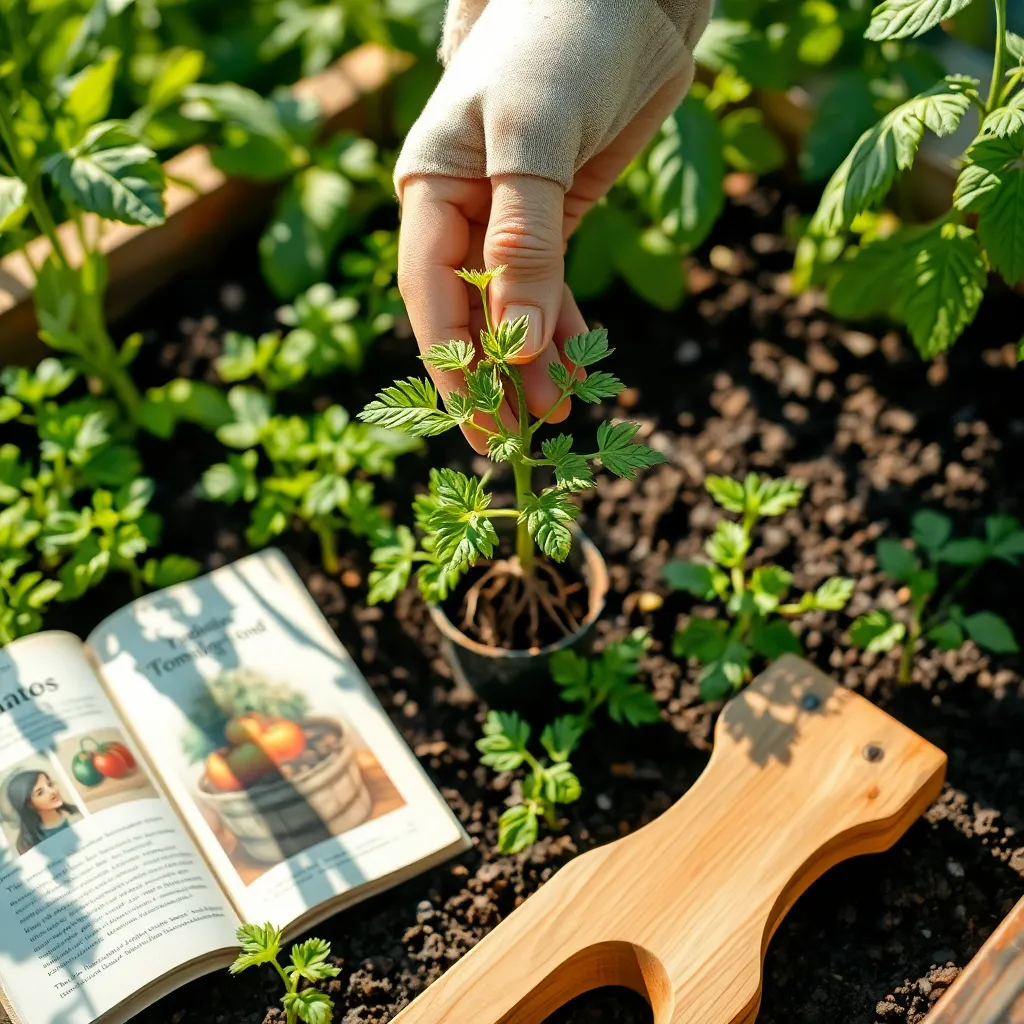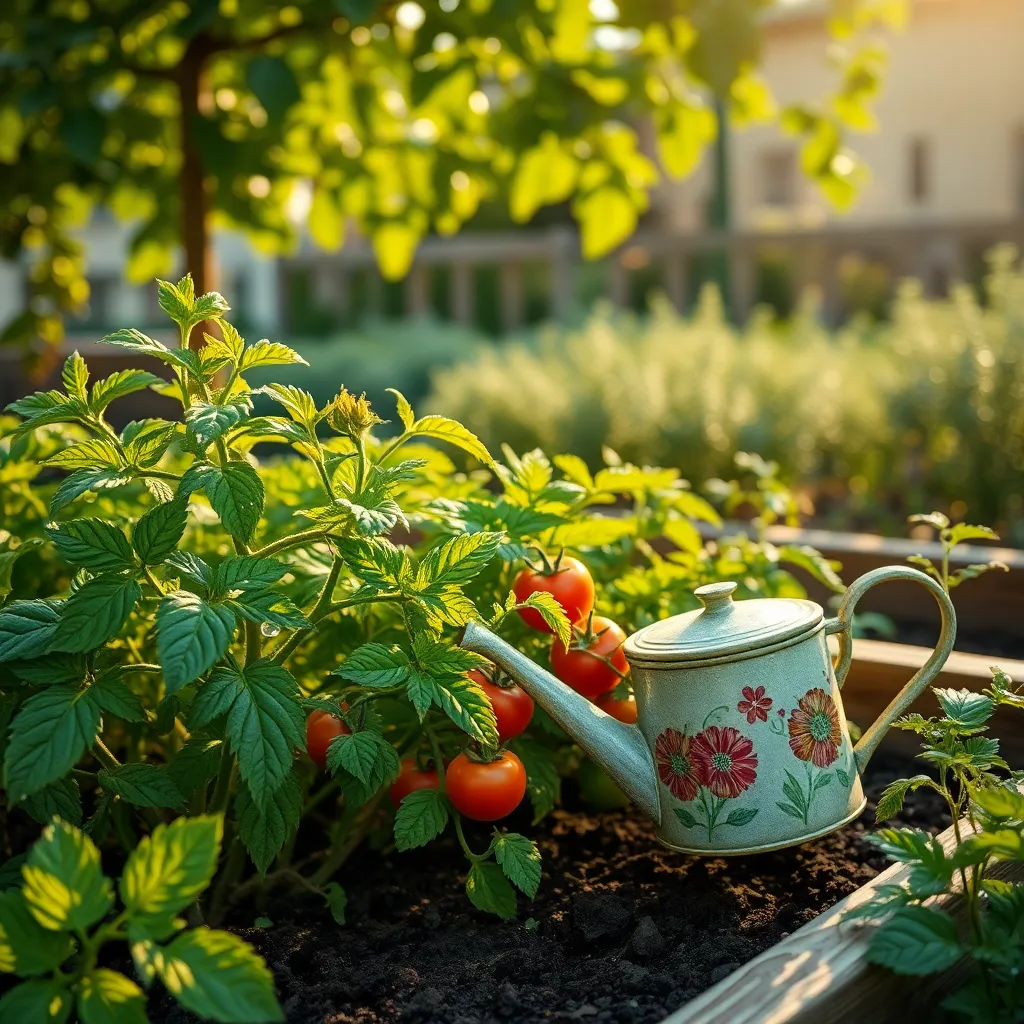Imagine walking into your garden and being greeted by the vibrant reds and greens of plump, juicy tomatoes ripening under the sun. Growing tomatoes in raised beds offers a unique blend of benefits, from improved soil drainage to easier access for tending your plants, making it an enticing endeavor for both novice and seasoned gardeners. Whether you’re just beginning your gardening journey or have a wealth of experience under your belt, cultivating tomatoes in raised beds can yield a bountiful harvest and become a rewarding part of your seasonal rituals.
For beginners, the structured environment of raised beds provides an ideal starting point, offering control over soil quality and reducing common pests. Experienced gardeners will appreciate the ability to optimize growing conditions and experiment with different tomato varieties. As you delve into this article, you’ll discover practical tips on selecting the best soil mix, understanding the crucial role of sunlight, and mastering the art of watering. We’ll guide you through each step with enthusiasm, ensuring you have all the tools you need to nurture your very own tomato oasis.
Select a Sunny Location

Choosing a sunny location is crucial for growing vibrant tomato plants in raised beds. Tomatoes thrive in full sun, requiring at least six to eight hours of direct sunlight daily.
Scout your garden area to find the spot with the longest sun exposure throughout the day. A south-facing location is often ideal, ensuring your tomatoes soak up the sun from morning until late afternoon.
Consider the shade patterns of nearby trees or structures that may block sunlight during the day. By observing these patterns over a few days, you can accurately identify the best spot for planting.
For gardeners in hotter climates, a location with some afternoon shade can prevent heat stress on the plants. Pair this with a high-quality, well-draining soil mix to keep roots cool and hydrated.
Advanced gardeners might use reflective mulch to enhance light exposure and warmth, promoting early fruiting and improved yields. This technique can be particularly beneficial in areas where sunlight is somewhat limited.
Build and Fill Raised Beds

Building a raised bed for your tomatoes is a rewarding project that can significantly enhance your gardening success. Start by selecting durable materials such as untreated cedar or redwood, which are rot-resistant and environmentally friendly.
After choosing your materials, construct a bed that is at least 12 inches deep to accommodate the deep root systems of tomato plants. This depth allows for proper root expansion, ensuring that your tomatoes have ample room to grow and access nutrients.
Once your frame is built, fill it with a nutrient-rich soil mix to promote healthy growth. A blend of 60% topsoil, 30% compost, and 10% perlite or vermiculite provides excellent drainage and fertility.
For optimal results, consider adding a layer of organic mulch after planting. Mulching helps retain moisture, suppresses weeds, and maintains a consistent soil temperature, which is crucial for tomato plants to thrive.
Plant Tomato Seedlings Carefully

When planting tomato seedlings in your raised beds, ensure that each one is spaced about 18 to 24 inches apart to allow for adequate air circulation. This spacing helps prevent diseases by promoting airflow between plants, reducing humidity around the foliage.
Gently remove the seedlings from their containers, taking care not to disturb the roots excessively. It’s important to plant each seedling slightly deeper than it was growing in its container, as tomatoes can develop roots along their buried stems, strengthening the plant.
Before planting, enrich the soil with a balanced organic fertilizer or compost to provide essential nutrients. Tomatoes thrive in well-drained, fertile soil with a pH between 6.0 and 7.0, so test your soil if needed and amend accordingly.
Water the seedlings thoroughly after planting to help them establish strong roots. Keep the soil consistently moist but not waterlogged, watering deeply about once a week, depending on your climate and weather conditions.
Consider adding a layer of mulch around each plant to retain soil moisture and suppress weeds. Mulching also prevents soil-borne diseases from splashing onto the leaves during rain or watering, keeping your plants healthier.
Install Sturdy Support Structures

To ensure your tomato plants thrive in raised beds, you’ll need to install sturdy support structures early in the growing season. By doing this, you help the plants maintain their shape and support the weight of the growing fruit, preventing breakage and disease.
Consider using a variety of support options such as cages, stakes, or trellises, depending on your space and preferences. Tomato cages are a great choice for beginners, as they are easy to use and provide robust support for the plants as they grow.
When using stakes, ensure they are at least 6 feet tall and inserted about a foot into the soil to provide adequate support. Secure the stems to the stakes with soft ties or cloth strips, which will prevent damage as the plants grow and mature.
For a more advanced setup, try creating a trellis system, which can maximize space and improve air circulation. Place the trellis at the back of the bed for easy access and train the vines to grow vertically, which can help in yielding more fruit.
Water and Fertilize Regularly

Consistent watering is crucial for growing healthy tomatoes in raised beds. Aim to provide your plants with about 1 to 1.5 inches of water per week, adjusting based on rainfall and temperature conditions.
Water deeply to encourage roots to grow downward, improving the plant’s overall stability and drought resistance. A drip irrigation system or a soaker hose can be highly effective in ensuring even moisture distribution without wetting the foliage.
Fertilizing regularly will ensure your tomato plants receive the nutrients they need to thrive. Begin with a balanced fertilizer at planting, and then switch to a high-potassium fertilizer as the plants start to flower.
To avoid nutrient deficiencies, consider using a slow-release fertilizer that delivers nutrients steadily over time. Organic options, such as compost or well-rotted manure, can also enhance soil fertility while improving its structure.
Monitor your plants for any signs of stress or nutrient imbalances, such as yellowing leaves or poor fruit development, and adjust your care routine accordingly. Advanced gardeners might consider a soil test to tailor their fertilization strategy precisely to their specific soil needs.
Conclusion: Growing Success with These Plants
In nurturing your tomato plants, you’ve explored five essential relationship concepts that beautifully mirror the care needed in personal connections: setting a strong foundation with quality soil, maintaining consistent communication through regular watering, supporting growth with sturdy frameworks, addressing conflicts by managing pests, and fostering resilience through seasonal changes. These principles not only cultivate thriving gardens but also nourish flourishing relationships.
As your actionable next step, consider choosing one relationship in your life where you can immediately apply these insights. Perhaps it’s deepening your bond by dedicating time to meaningful conversation or strengthening support with small acts of kindness.
Remember, relationships need ongoing care and attention, just like your garden. Don’t let this wealth of knowledge slip away—bookmark this article now to revisit these nurturing strategies whenever needed. By saving it, you plant seeds for future growth and resilience in your relationships.
Looking ahead, embracing these foundational principles promises not only a bountiful harvest of tomatoes but a more connected and harmonious journey in all your relationships. Feel empowered to cultivate love and understanding, and watch as your relationships flourish and thrive.
